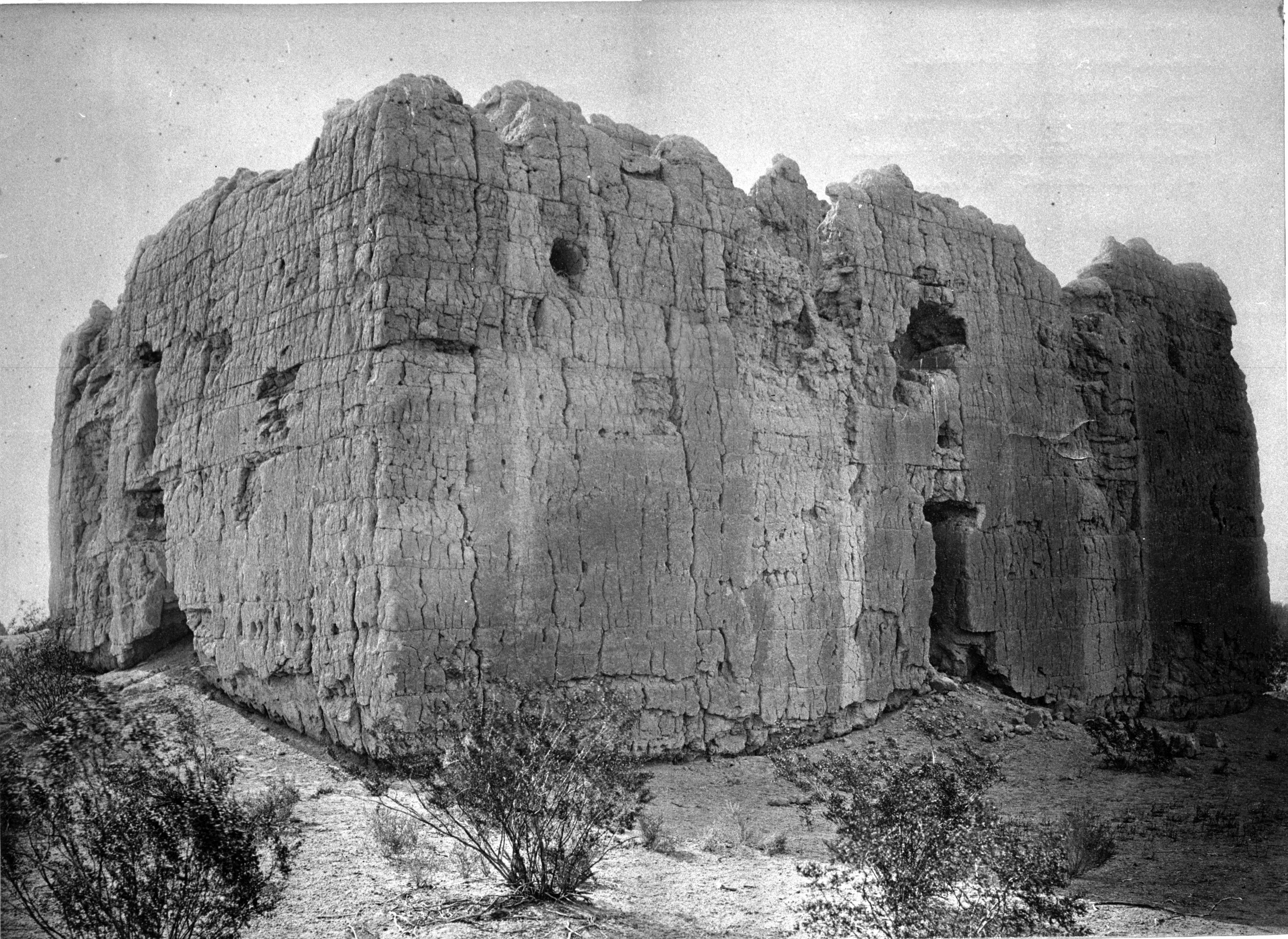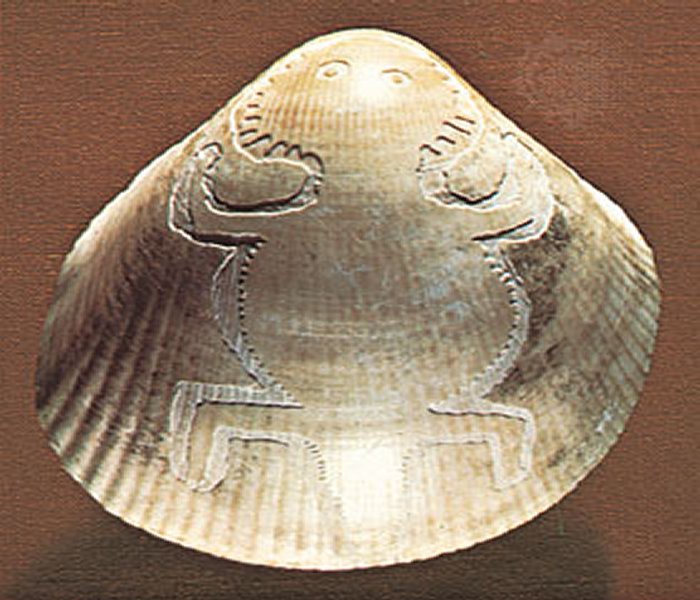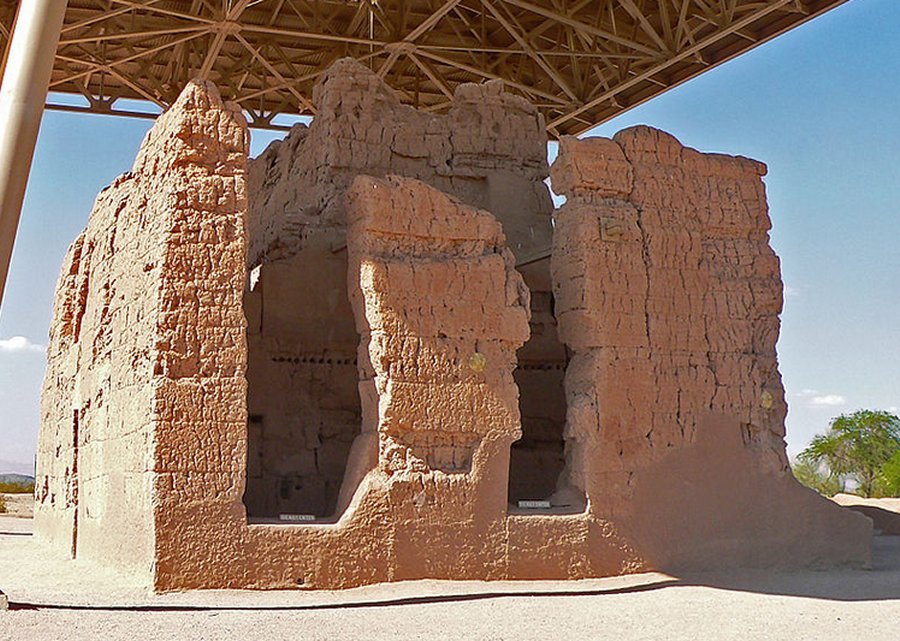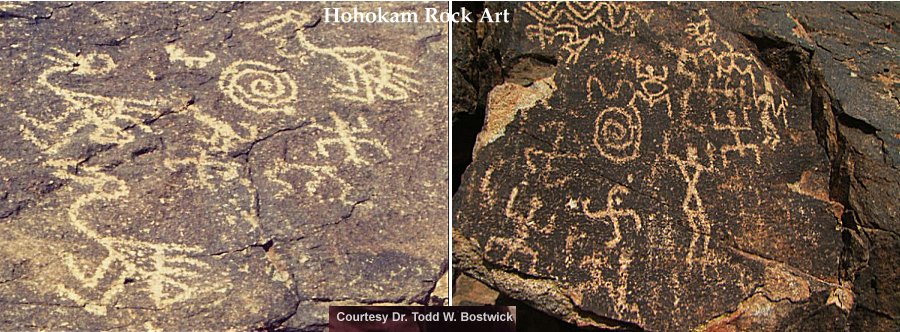‘Masters Of The Desert’ – Hohokam People, Massive Caliche Structures And Sophisticated Extensive Irrigation Canals
A. Sutherland - AncientPages.com - Casa Grande Ruins are pre-Columbian ruins in south-central Arizona, U.S., in the Gila River valley just north of Coolidge.
Discovered in 1694 by Jesuit missionary Eusebio Kino, the ruins are dominated by the Casa Grande (“Big House”), an impressive four-story watchtower built in the early 1300s.
The Casa Grande is the tallest and most massive Hohokam building known, standing 35 feet tall and containing almost 3,000 tons of caliche. Caliche mud was piled up in layers approximately two feet high; bricks or blocks were not used. There are the horizontal cracks about two feet apart across the surface of the outside walls.
Openings in the walls of Casa Grande align with the Sun and Moon at different times during the year.
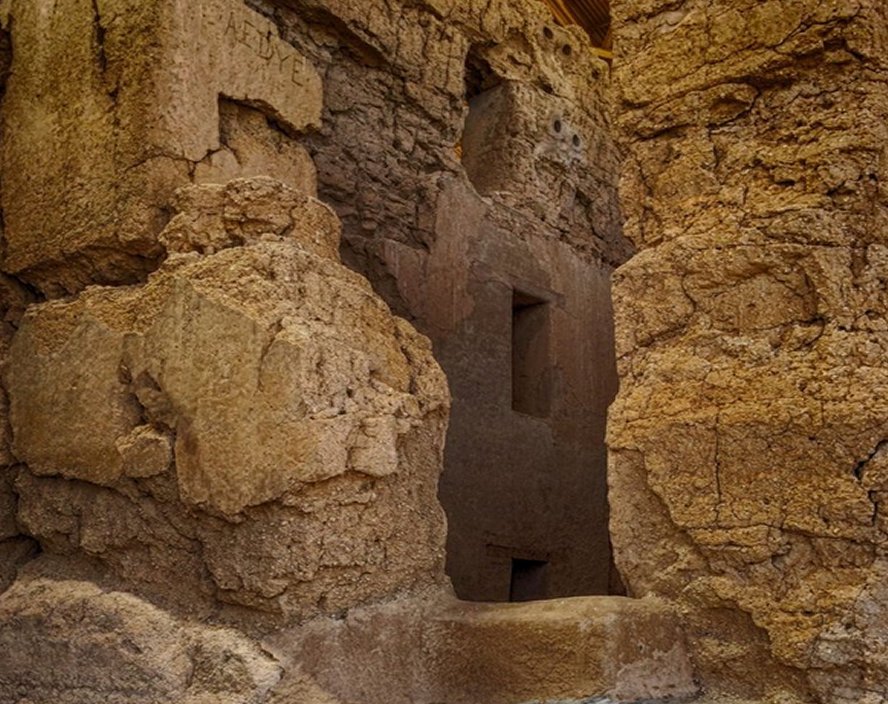
The Casa Grande was a special structure of great importance. Why did the Hohokam (a Pima Indian’s word meaning “Those Who Have Gone”), work so hard to construct this high building?
These cracks are between layers of caliche. While most buildings had floor and roof supports made from local desert trees, the Casa Grande once contained hundreds of imported beams - pine, fir and juniper obtained from mountains located over fifty miles away. Floor supports spanned the width of each room; saguaro ribs were laid perpendicular to these; reeds were set on this framework and a coating of caliche completed the floor.
The smoothly plastered inside walls are a further indication that much time, work and care went into the construction of the Casa Grande. Why?
The Casa Grande was a special structure of great importance. Why did the Hohokam (a Pima Indian’s word meaning “Those Who Have Gone”), work so hard to construct this high building? How was this structure used by them?
When the Hohokam built their permanent dwellings, the desert did not give them much choice regarding building materials. No building stone and only few large trees are accessible in a reasonable distance. However, a few feet below the ground, the Hohokam people discovered a large amount of concrete-like building material - caliche.

The Hohokam people were 'Masters of the Desert’. Their extensive irrigation canals served as the foundation of the modern canals used to irrigate crops in the valleys along the Salt and Gila rivers.
Using caliche, the Hohokam could construct walls, plaster floors, and seal roofs of their dwellings.
These fascinating people adapted to the dry conditions of the desert and learned to use water from mountain run-offs and rivers to irrigate their fields. By 300 CE, these desert dwellers had formed a distinct culture.
See also:
Secrets Of Mysterious Lost Kingdom Of Calusa In Florida And The Shell Indians
Bighorn Medicine Wheel: Sacred Site And Ancient Solar Observatory
Is The Poverty Point Octagon World’s Largest Ancient Solstice Marker?
Archeologists call them "Hohokam" but Hohokam does not relate to a tribe or a people, and today it is used only when referring to archeological discoveries; otherwise, the term ‘ancient Sonoran Desert people’ is used when talking about the people who created the pottery, homes, and irrigation systems.
They may have descended from an earlier hunting and gathering Archaic groups that began in this area around 5,500 BC. The groups, mainly gathers and hunters, possessed cultivated plants as squash and corn; they built storage pits, small pithouses and trash deposits. However, they lacked pottery, which appeared later along with development of agriculture, and thus the Hohokam culture began.
Casa Grande Ruins represent evidence of the culture that once thrived in the arid region of Arizona. Except for the Casa Grande, they also developed wide-scale irrigation farming.
They were 'Masters of the Desert’. Their extensive irrigation canals, helped them change parts of the Sonoran Desert into farmland; the structures also served as the foundation of the modern canals used to irrigate crops in the valleys along the Salt and Gila rivers.
They also developed extensive trade connections which lasted over a thousand years until about 1450 CE. Their trade with distant Mesoamerican cultures whose influence can still be seen in Hohokam ball courts.
What happened to the culture known as the Hohokam, one of the Southwest’s most complex and influential societies ?
By the late 1300s, the Hohokam were perhaps the most populous cultural group in the Southwest, and suddenly around this time, one or several different causes triggered their sudden decline.
Meticulous research conducted in southeastern Arizona, the heart of the Hohokam homeland, suggests the Hohokam were not alone in the region; there was another tribal group — the O’odham, whose members still call Arizona home today - lived in the region perhaps as early as the 1100s. They continue to live in Arizona.
The region has a long and rich history and there are still many unrevealed secrets.
Written by – A. Sutherland AncientPages.com Staff Writer
Copyright © AncientPages.com All rights reserved. This material may not be published, broadcast, rewritten or redistributed in whole or part without the express written permission of AncientPages.com
Expand for referencesMore From Ancient Pages
-
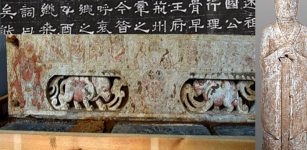 1,500-Year-Old Tomb With Patterns Linked To Zoroastrianism And Buddhism Unearthed In C. China
Archaeology | Jan 19, 2021
1,500-Year-Old Tomb With Patterns Linked To Zoroastrianism And Buddhism Unearthed In C. China
Archaeology | Jan 19, 2021 -
 Curious Encounter Between Inuit And Vikings Led To Something Surprising That Shaped History
Featured Stories | Aug 4, 2024
Curious Encounter Between Inuit And Vikings Led To Something Surprising That Shaped History
Featured Stories | Aug 4, 2024 -
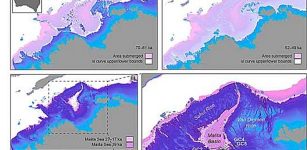 Ancient Sahul: Its Submerged Landscapes Reveal A Mosaic Of Human Habitation
Archaeology | Dec 26, 2023
Ancient Sahul: Its Submerged Landscapes Reveal A Mosaic Of Human Habitation
Archaeology | Dec 26, 2023 -
 3,000-Year-Old Geoglyphs May Depict The Heavens
Archaeology | Jun 25, 2018
3,000-Year-Old Geoglyphs May Depict The Heavens
Archaeology | Jun 25, 2018 -
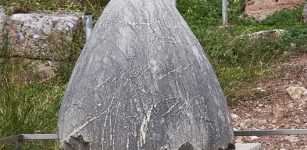 Omphalos – Mysterious Ancient Sacred Object And Its Meaning
Artifacts | May 24, 2017
Omphalos – Mysterious Ancient Sacred Object And Its Meaning
Artifacts | May 24, 2017 -
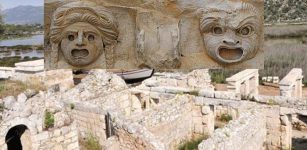 Ancient City Was Discovered Underground In Antalya’s Demre District
Archaeology | Nov 26, 2019
Ancient City Was Discovered Underground In Antalya’s Demre District
Archaeology | Nov 26, 2019 -
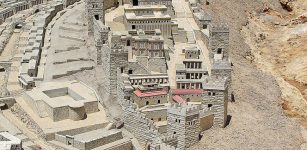 Has a 2,000 Year Old Podium Been Found in the City of David?
Civilizations | Sep 2, 2015
Has a 2,000 Year Old Podium Been Found in the City of David?
Civilizations | Sep 2, 2015 -
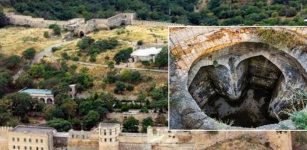 Subterranean Structure In Medieval Naryn-Kala Citadel: Was It The Christian Temple?
Archaeology | Jul 12, 2019
Subterranean Structure In Medieval Naryn-Kala Citadel: Was It The Christian Temple?
Archaeology | Jul 12, 2019 -
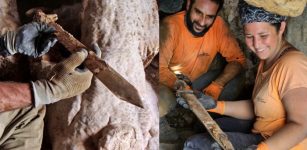 Four Rare And Incredibly Well-Preserved 1,900-Year-Old Roman Swords Found In Judean Desert
Archaeology | Sep 6, 2023
Four Rare And Incredibly Well-Preserved 1,900-Year-Old Roman Swords Found In Judean Desert
Archaeology | Sep 6, 2023 -
 Why Some Stories About Ancient Roman Emperor Nero Are Wrong
Featured Stories | Nov 21, 2016
Why Some Stories About Ancient Roman Emperor Nero Are Wrong
Featured Stories | Nov 21, 2016 -
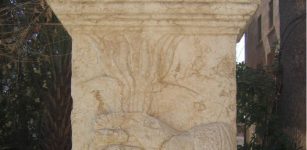 Mystery Of The Anonymous God Of Palmyra Finally Solved By Scientists
Archaeology | Jun 21, 2022
Mystery Of The Anonymous God Of Palmyra Finally Solved By Scientists
Archaeology | Jun 21, 2022 -
 Who Were The Goths And Where Did They Come From?
Civilizations | Apr 16, 2019
Who Were The Goths And Where Did They Come From?
Civilizations | Apr 16, 2019 -
 Was Biblical King David Unknowingly Part Of A Secret Master Plan?
Ancient Mysteries | Jul 1, 2021
Was Biblical King David Unknowingly Part Of A Secret Master Plan?
Ancient Mysteries | Jul 1, 2021 -
 Apollo – Loved And Feared Greek God Of Divination And Prophecy Who Was Also Seer Of Zeus
Featured Stories | Feb 6, 2019
Apollo – Loved And Feared Greek God Of Divination And Prophecy Who Was Also Seer Of Zeus
Featured Stories | Feb 6, 2019 -
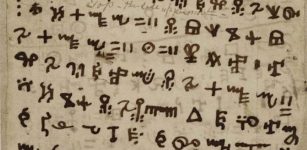 Vai Script – Rare African Manuscript Offers Clues Into How Writing Evolved
Archaeology | Jan 11, 2022
Vai Script – Rare African Manuscript Offers Clues Into How Writing Evolved
Archaeology | Jan 11, 2022 -
 Evidence Humans Have Been Using Bear Skins For At Least 300,000 Years Discovered
Archaeology | Dec 27, 2022
Evidence Humans Have Been Using Bear Skins For At Least 300,000 Years Discovered
Archaeology | Dec 27, 2022 -
 Roman-Era Girl Buried And Adorned With 1,700-Year Old Gold Jewelry Found In Pagan Cave
Archaeology | Apr 8, 2023
Roman-Era Girl Buried And Adorned With 1,700-Year Old Gold Jewelry Found In Pagan Cave
Archaeology | Apr 8, 2023 -
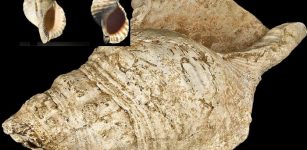 18,000-Year-Old Seashell Was Musical Wind Instrument Used By Magdalenian People
Artifacts | Feb 11, 2021
18,000-Year-Old Seashell Was Musical Wind Instrument Used By Magdalenian People
Artifacts | Feb 11, 2021 -
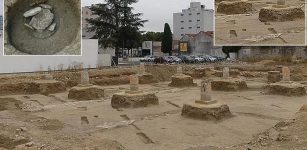 More Than 2,500 Years Old Gallic Tombs Unearthed In Nîmes, Southern France
Archaeology | Aug 17, 2020
More Than 2,500 Years Old Gallic Tombs Unearthed In Nîmes, Southern France
Archaeology | Aug 17, 2020 -
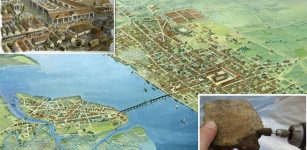 London Is Twice As Old As Previously Thought – New Discovery Reveals
Archaeology | Apr 9, 2020
London Is Twice As Old As Previously Thought – New Discovery Reveals
Archaeology | Apr 9, 2020

